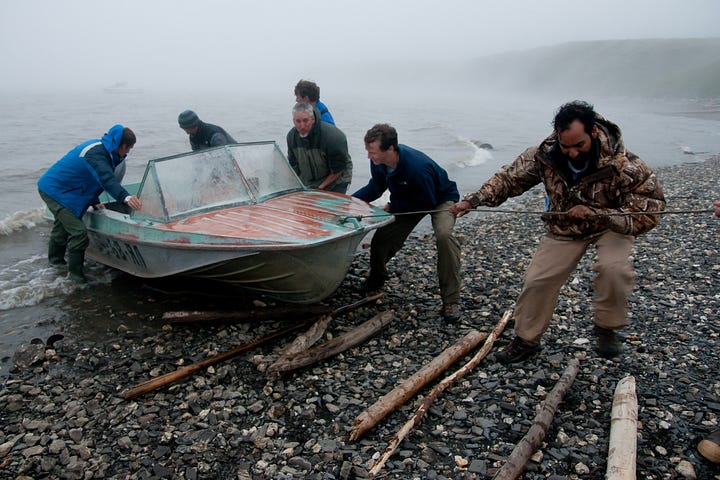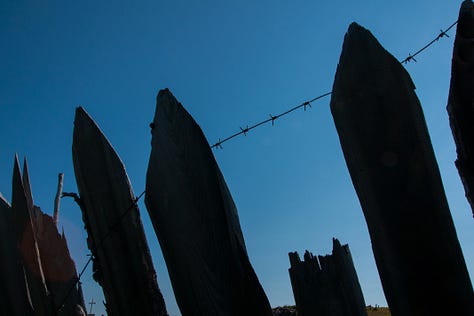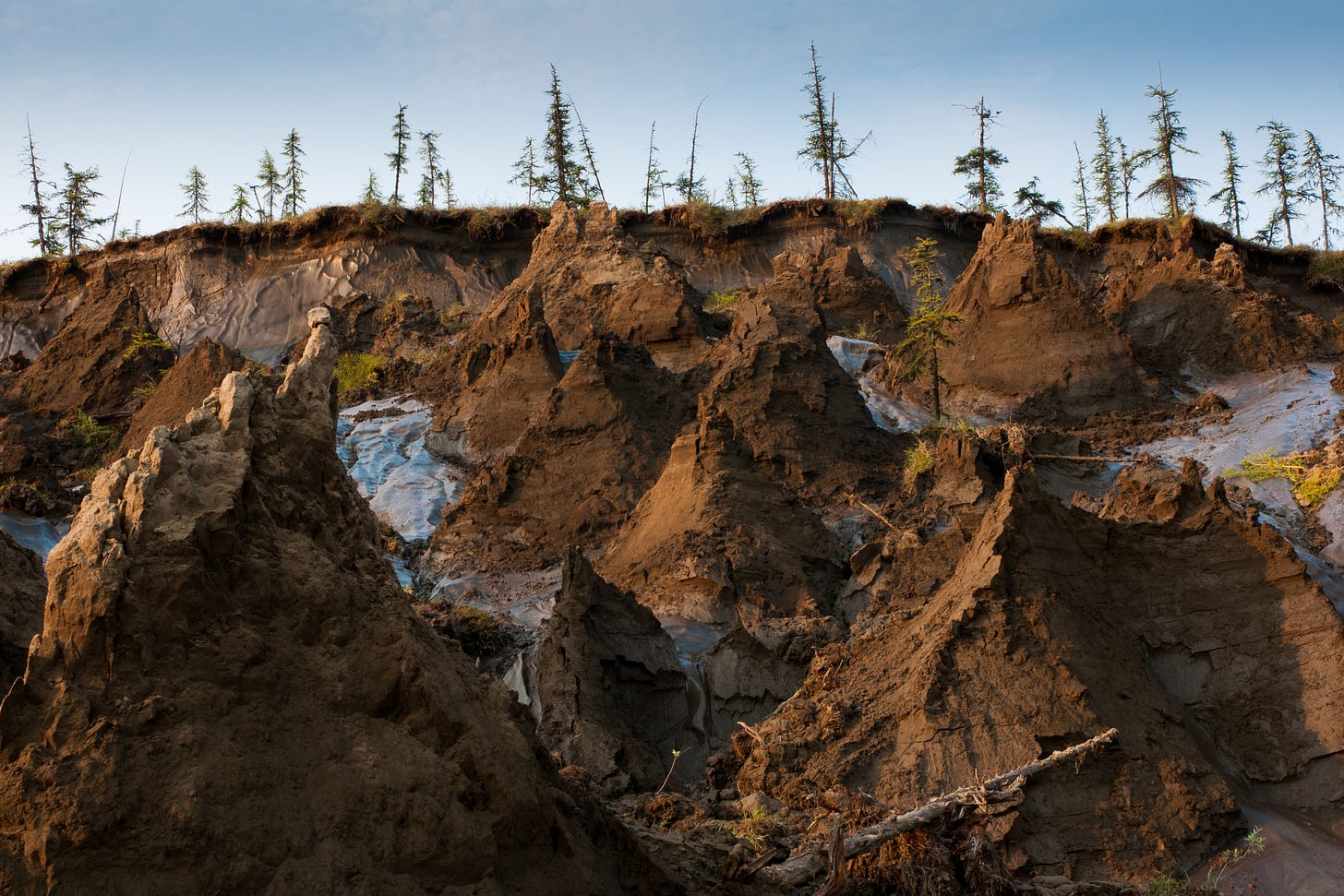Reporting from the Front Lines of Global Warming
The Arctic is heating four times faster than the global average
I’m Max Wilbert, the co-author of Bright Green Lies: How the Environmental Movement Lost Its Way and What We Can Do About It and co-founder of Protect Thacker Pass. Welcome to Biocentric, a newsletter about sustainability, greenwashing, and resistance. If you want to follow this newsletter, you can subscribe. Almost all the writing I publish here is free, but paid subscribers support my writing and organizing and receive occasional behind-the-scenes reports and unreleased drafts.
In 2010 I traveled to the Siberian Arctic as the writer and photographer for a climate change research expedition funded by the U.S. National Science Foundation. With me was a team of climate scientists, limnologists, geographers, and chemists planning a month of intensive research and data collection.
After four days of travel across more than 11,000 miles, we arrived at our home for the month: a barge on the Kolyma River docked at a former Soviet radar site converted into a scientific research outpost.
As we stepped off the plane, I immediately started sweating. The Arctic is warming four times faster than the global average, and 2010 was the hottest year on record — a record which, since then, has been broken ten times.




This is a "drunken forest." As permafrost that has been frozen since the last ice age thaws underneath the Arctic, entire forests are becoming destabilized and are falling over. The same thing is happening to buildings, infrastructure, and entire landscapes from Alaska to Norway to Russia.


Researchers say that “permafrost thaw is drastically altering Arctic lands,” creating massive wetlands where none existed before, drowning villages, eroding coastlines, and causing never-before-seen methane explosions.
One dramatic example of this thaw can be seen at a site called Duvanny Yar, along the Kolyma River. There, a permafrost hillside is melting as the climate warms exceptionally fast, forming this dramatic and rapidly changing landscape.
The day I took these photos it was about 90° F (32° C).



As the permafrost thaws, bones from the last ice age emerge. Bison, wild horses, Siberian camels, and mammoths. Lots of mammoths. There is a lesson here; climate change is exceptionally dangerous. And this brings us to perhaps the biggest danger of Arctic permafrost thaw: the positive feedback loop it represents.


A positive feedback loop occurs when “some initial change in the climate causes some secondary change that in turn increases the effects of the initial change, essentially magnifying the initial effect.”
In the Arctic, as permafrost thaws due to global warming, it releases carbon and methane, which warms the atmosphere further. In other words, it’s a downwards spiral.
The same sort of positive feedback loops are playing out elsewhere on the planet, such as in the Amazon, where warming threatens to kill the forest releasing huge amounts of carbon and causing a permanent shift to savanna.
I have a great deal of respect for climate scientists, having studied with them and seen the hard work that goes into the research that informs our knowledge of these feedback loops.




The amount of work that goes into producing climate models and predictions of future warming is staggering. This science is incredibly useful to calibrate climate models and predict how exactly global warming will play out in different environments and for different feedback loops.
But in a sense, it's simply quantifying the apocalypse. One of the main lessons I learned on this expedition is that most scientists can explain the problem, but not the solution.
We love to imagine that institutions and governments have a solution.
They don't. We're in uncharted territory. The cryosphere of our planet is going fast. Things have gotten far worse over the last 14 years.




I spend much of my time critiquing green technology, but not because I'm a global warming denier.
In fact, after my experiences in the Arctic, I shot and produced a short film on the apocalyptic warming that is playing out there 2-3 times as fast as the global average.
Rather, I do so because the road to hell is paved with good intentions.
This is Ambarchik, a transfer station for political prisoners being sent to Soviet prison and work camps (gulags) in the Kolyma River Basin beginning in the 1930’s. Perched on the edge of the world, the Arctic Ocean to one side and the treeless tundra to the other, thousands were sent here to die.
The gulags are a cautionary tale of how political movements that see themselves as liberators can become a nightmare.



The most important thing that I found in Siberia was not science. It was a deeper connection to the planet. And it is that — not numbers and data, ultimately — that will lead us to take action and defend the living planet.
This is why I fight for the living world.









If you’re interested in reading the story I wrote in 2010, you can find a PDF of the student magazine which published it here. See page 16:






Really learned a lot here. Thanks. I've never seen photos like the ones you shared above. That's too bad. Everyone should be seeing what Arctic thawing actually means
Thx for sharing this. Nice pics.